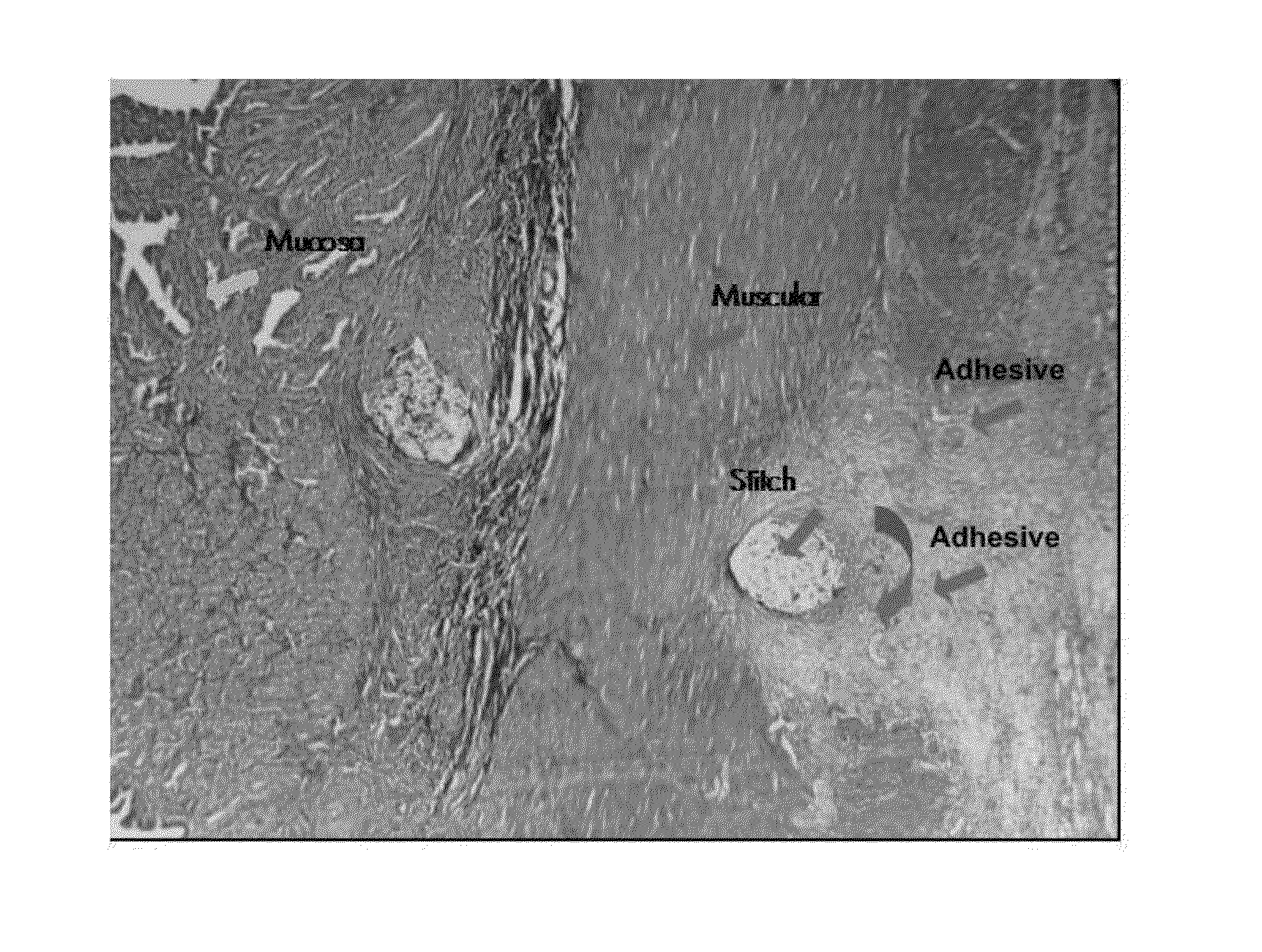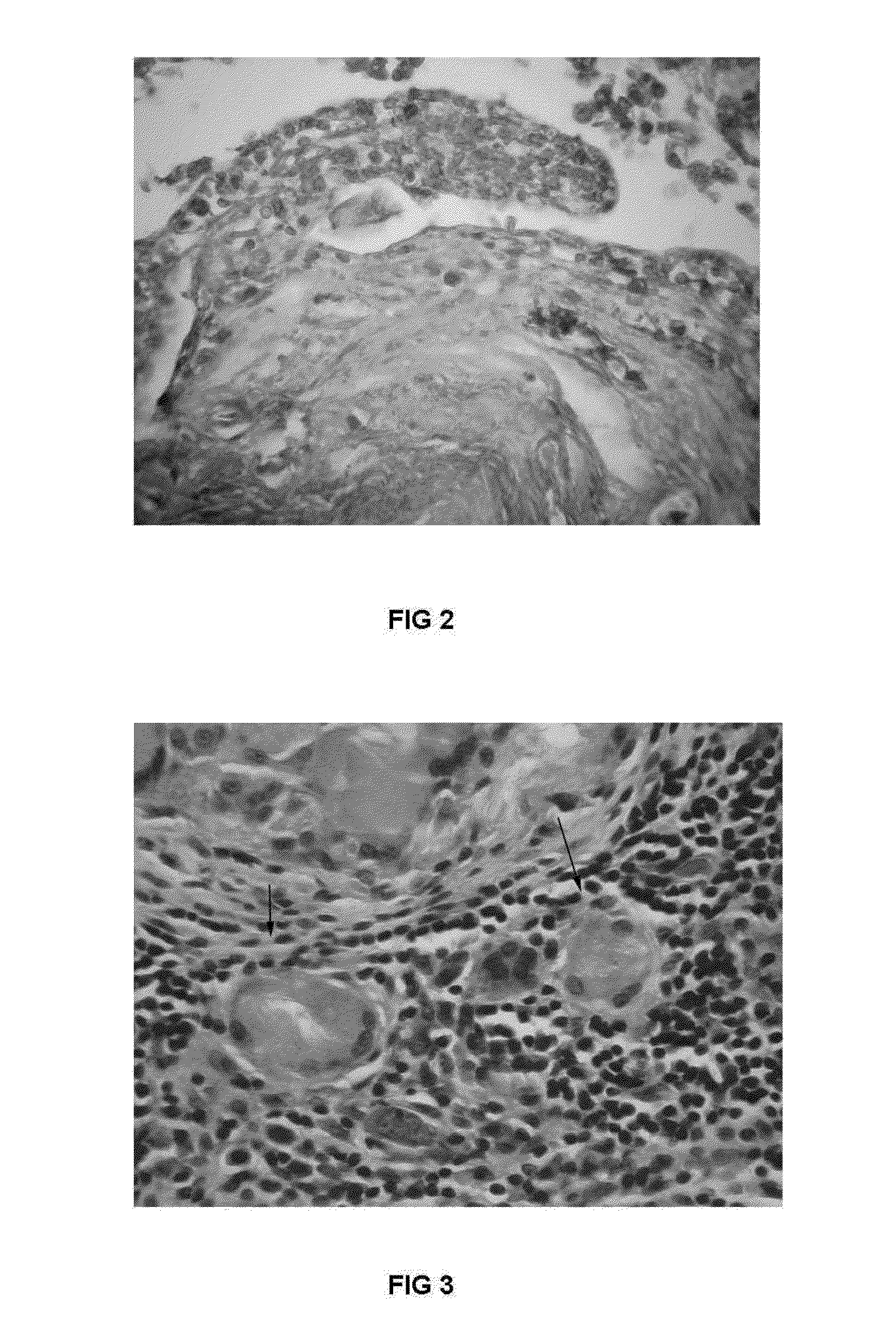One of the greater problems that plague patients and surgeons world-wide is proper healing of an anastomosis within the
gastrointestinal system and those of other systems as well.
Some dehiscences carry a
high mortality rate (30-50%) and their complications require urgent reoperations and prolonged hospitalization in the intensive therapy units involving, for example,
parenteral nutrition, complicated
respiratory care, prolonged and costly antibiotic-therapy, numerous laboratory tests, etc.
Serious
peritonitis ensues in patients that are already complicated with pulmonary, circulatory problems, etc., and require immediate and urgent reoperations, as well as special treatment in an
intensive care unit, as mentioned before, which is extremely expensive.
Also, mortality in these patients is greater, and the expenses in the
intensive care unit are also very high for obvious reasons14-21.
In debilitated,
older patients, frequently with
peritonitis, it is not possible to practice a primary anastomosis, but instead it is necessary to perform a
colostomy or ileostomy. olostomies save many lives but nobody likes them.
But, that also means another
surgery, additional risks, expenses, etc.
As a result, the anastomosis is very weak, inflamed due to the presence of sutures and staples (
foreign bodies) and
bacteria, clots, etc.
It is precisely during this time period that anastomosis leaks (or failures) often occur with the ensuing very grave and often lethal complications.
In the case of fistulas that can be a consequence of an anastomotic dehiscence or trans-operative trauma, etc., they represent a very serious and annoying complication of various
surgical procedures and some diseases of diverse organ systems like the gastrointestinal, respiratory, urinary, etc.
Staples are very expensive and, like sutures, they can incorporate, catch or compress small nerves, or produce osteo-condritis and
post operative pain.
Glycerol is only recommended for external or topic applications due to its
toxicity in the body cavities.
U.S. Pat. No. 6,046,178 does not teach a sealing nor a adhesive thixotropic non-toxic composition for use in internal sterile body cavities where does exist a 100%
relative humidity and is completely isolated of the external environment (which means is not exposed to
air current).
However the lumen of the gastrointestinal
system is considered as external environment and is contaminated by very dangerous
bacteria.
U.S. Pat. No. 5,985,312 does not teach a sealing nor a adhesive thixotropic non-toxic composition for use in internal sterile body cavities where does exist a 100%
relative humidity and is completely isolated of the external environment (which means is not exposed to
air current).
Due to the presence of
fibrin, this adhesive suffers from the disadvantages as discussed further below.
Nevertheless, a
disadvantage of this class of adhesives is that it is contraindicated for application in internal organs or
vascular surgery, and therefore in anastomosis, due to its
toxicity and oncogenic effects which have been well documented30-31.
Fibrin (and its derivatives) has been used in formulating biomedical adhesives with variable results from the experimental point of view and prospective studies in humans cannot be done for logical reasons.
Nevertheless,
fibrin has several disadvantages: risk of
viral transmission like any other
cryoprecipitate exists; use of fibrin requires processes for extraction of blood; costs associated with fibrin are high; it requires a special applicator; risk of allergic reactions is always present; and a fatality has been reported.
Nevertheless, this type of product and systems of adhesives available do not avoid the
health problems described before.
However, the use of preparations of the analogous
fibrinogen also has obvious limitations.
 Login to View More
Login to View More 


